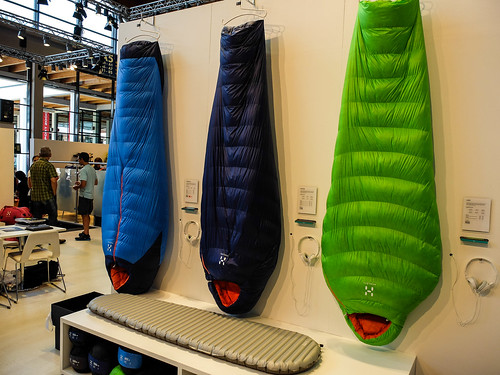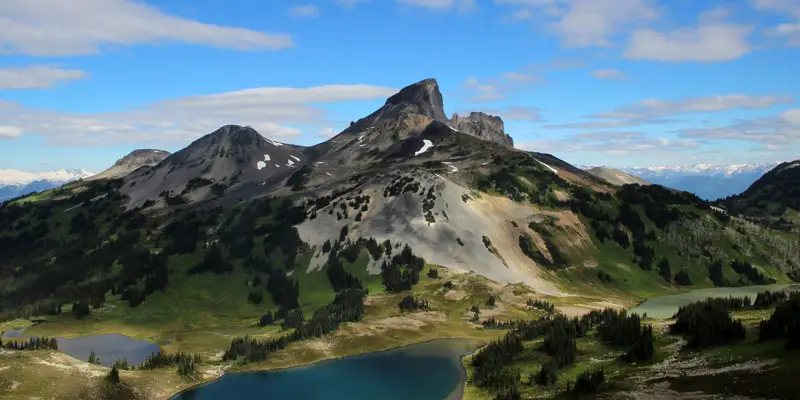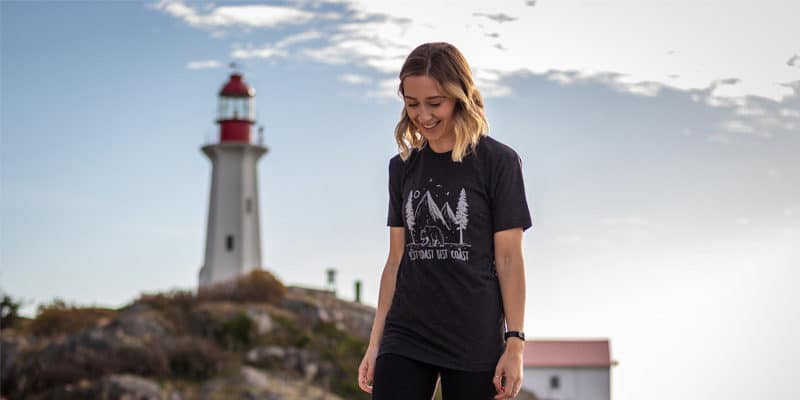
There are many things to consider when buying a sleeping bag. In this article, I give an overview of what to look for in a sleeping bag, and offer tips on which type of bag is best for your camping needs.
Season & temperature rating – The first thing to consider when looking at sleeping bags is to ask yourself when will you be using it the most. Are you a year round camper, or just get out on the occasional long weekend over the summer months? Bags are typically good for either summer, 3 season, or winter camping. It is a good idea to buy a bag that has a rating of a few degrees colder than you expect to ever be camping in.
Fill – The fill has a large impact on the performance of the bag and its weight. The two types of fill are down and synthetic.
- Down: Down is a great natural insulator. It is lightweight and very durable. Down bags will be more expensive than synthetic bags, but have a much longer life ( 3 – 5 times longer). The downside of down bags (no pun intended) is that they lose insulation when wet, so it is crucial you keep them as dry as possible. A vapour barrier liner (discussed below) can help with this. When looking at down bags you should look at the ‘fill power’, a number from 400 – 750. A higher rating will give you better warmth for the same weight.
- Synthetic: These vary in weight and durability. Generally the more loft and durability of a synthetic bag, the heavier it is. The advantage of synthetic bags over down is a lower cost, and their ability to retain heat when wet. On longer back country journeys where it may not be possible to keep the bag dry, a synthetic may be preferred.
Loft – The loft is the puffiness or thickness of the bag and is directly related to the temperature rating of the bag. The more loft, the warmer the bag and also the more weight. Down provides the best loft for weight.
Shell / Fabric – Fabric should be durable and light. The thread count is typically the best measure of fabric quality. Nylon and polyester are typically used, as they are durable, somewhat water resistant, and still breathable. If you are going to be camping a lot where it may be hard to keep the bag dry, look into a Gore-Tex or Dryloft fabric, which are more waterproof.
Volume – The size of your bag when packed will be something to consider for back country camping when you have limited space in your back pack. Compression bags can help reduce the volume, especially with down fill bags.
Weight – Also important to consider for back country camping, and again, down bags will typically be lighter weight than synthetic fill.
Style – There are 3 styles of sleeping bags: mummy, barrel, and rectangular. The shape of the bag affects how comfortable it is, how well it retains heat, and how well it will compress.
- Mummy bags: are designed to save weight and retain heat. They are tapered at the feet, wider at the shoulders, and have a rounded hood for the head. The downside to mummy bags is that some people find them claustrophobic, and you are unable to open them up all the way to create a blanket because of the way the zipper ends around the shin area.
- Barrel bags: are a hybrid between mummy and rectangular bags. They have no hood, and are a little roomier, but still somewhat tapered.
- Rectangular bags: are…well rectangular. They are very roomy, and as such don’t provide the best warmth to weight. They are bulkier than other bags and let a lot of body heat escape. They are best suited for warmer weather camping, and not typically recommended for most back country camping (especially in southwestern BC). On the plus side they are a lot cheaper than other bags.
Other features – A few other features that you may want to consider.
- Hood: around 40% of body head escapes through the head. A hood is a great feature to help retain that heat.
- Neck yoke: some bags have a ‘collar’ type feature that will contour around your neck and shoulders to further retain heat.
- Zipper and draft tube: zippers can be on the left or right, depending on whether you are left or right handed for ease of opening and closing. More importantly, if you are going to be zipping two bags together, make sure one is a left zipper and the other a right. The draft tube is a tube that runs along the back side of the zipper to retain heat.
- Length: This is a no-brainer, but bags come in different sizes. Get one you will fit into!
Other factors – So, you’ve read this whole article, gone out and purchased a great bag for your needs. Now there are a few other things that will factor into its performance:
- Sleeping pad: These are necessary, and temperature rating systems assume you have a decent sleeping pad.
- Vapour barrier liners (VBL): Best used in sub-zero temperatures, a VBL fits inside the sleeping bag to stop heat loss. These can add 5 – 10 degrees C to your bag’s temperature rating.
- Overbags: Work to reduce the amount of condensation your bag collects, thus keeping the inner fill dryer and warmer. These, like VBLs, can add 5 – 10 degrees to your bag’s temperature rating.
- Clothing: Wearing fleece clothing, long underwear and a toque are great ways to stay even warmer on cold nights.
By now you should have a good understanding of what to look for in a sleeping bag, and what will help you avoid waking up, teeth chattering, in the middle of the night!



